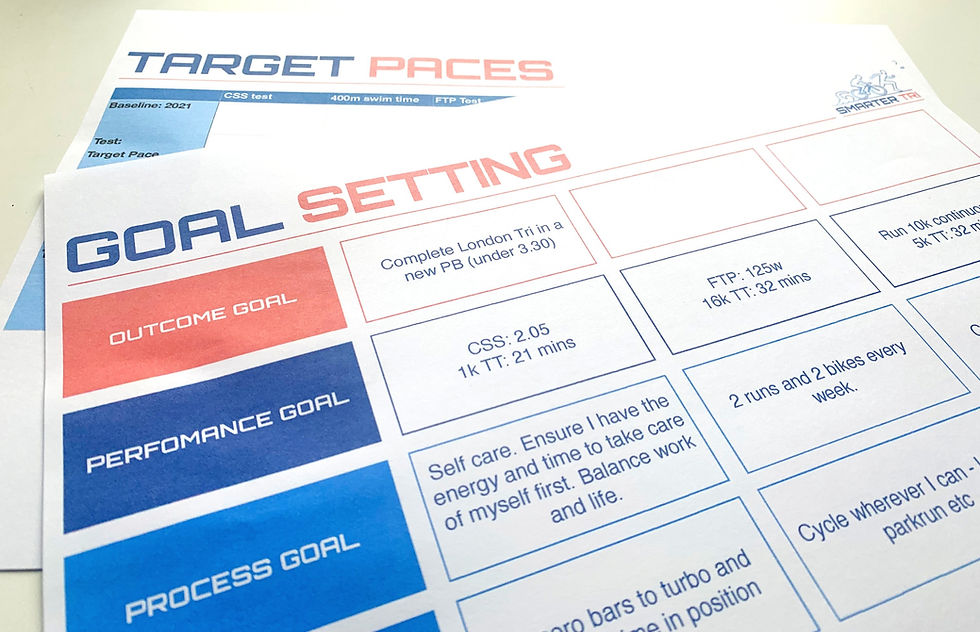SMARTER GOALS
- Jo Watkinson
- Feb 23, 2023
- 3 min read

At Smarter Tri, I work with my athletes to set their goals for the season. The approach I use involves selecting outcome goals, performance goals and process goals.
Why are goals so important?
Goal setting is an essential part of what I do with my athletes as it helps them to trigger new behaviours, keeps them focused on what they really need to do, and helps them to keep moving forward.
Goal setting also drives a sense of achievement and when you're on a long training plan that lasts for months, having measurable goals and feeling like you're progressing along the way is essential for motivation and a sense of self-mastery.
It also helps with pre-race nerves - we've set clear goals and targets, and we've measured it along the way. If you're not on track or if you're exceeding expectations we know about it WAY before race day! And we adjust the goals and the plan accordingly.
Goals also help my athletes to prioritise. Having specified goals helps us to review every decision we make to ensure we're keeping you focused, on the right path and driving towards your goal.
So how do I set goals?
For my athletes, we start with looking at what they want to achieve this year, and why. We then distill that down into one clear outcome goal. That may be a specified time at your main target race of the year, or it may be qualification for Team GB or Kona, or it may be to podium.
We then agree performance goals. This comes in two parts:
1) Identifying the tests: My athletes test on a fairly regular basis so this needs to be relevant to their race of choice, something they can replicate easily, but also something that they enjoy doing. A lot of my athletes would rather do a 10 mile time trial on the bike than an FTP test! Testing also needs to be something that provides data without taking several days or a week to recover from so it fits in with their overall training.
2) Identifying the numbers: If an athlete wants to PB, what do they need to do in training to achieve this? Or if they're looking to qualify, what standard will they need to achieve? Usually at this point I do a lot of maths to work out where we need them to be, and what is actually achievable for that athlete. I then specify testing windows in their plan and work out where I would expect them to be at each testing window.
Finally, we then look back at the previous work the athlete has done to identify process goals. What do they need to do more of? What do they need to keep doing? What do they need to focus on to achieve their outcome. For example, many athletes need to work on their race nutrition strategy and they need to be really clear on what to eat before, during and after they race for optimal performance and recovery. Identifying this and practicing it well ahead of time would be a process goal.
Where does the magic happen?
So it's all very well creating the document, but the magic only really happens when you use it.
I use it with my athletes in their monthly catch ups. We regularly look at the process goals to see whether they feel they are working on those areas. I also use it when I'm planning for each athlete to include those areas that need more work and to help to support them to deliver on those process goals. And we use these goals to drive the decisions that we make on their racing plan for the year.
So what can you do?
You can do this yourself using the free templates that you can download at the bottom of this post. Take some time out, grab a cup of tea and give yourself space to think and reflect.
Or alternatively, book my 90 minute one to one goal setting session where we can work through it all in detail. This is included for free for all of my monthly athletes, so you know it works and delivers results.
Either way, set your goals, print it out and put it somewhere that you can see it regularly and keep yourself laser focused for your season ahead.



Comments